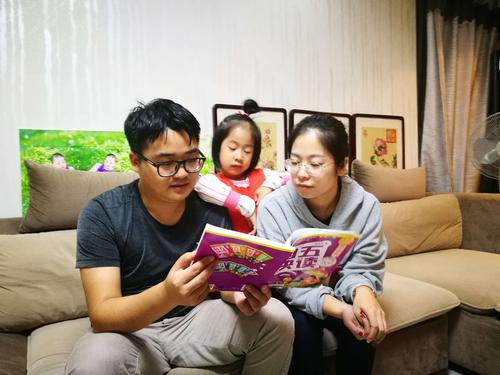菊池的英文译语怎么说-广州统计教育培训网
2023年4月3日发(作者:核减)
字母在单词中的发音终结
一、元音字母的发音规则
1)在重读开音节中元音字母读它的字母音。
amakelatesamegatespacepace
pa问刘十九古诗赏析 letalecavetakefadesavelakelate
ehefeebecompleteeveshewe
evenfeverrecentlyChinesethesethemeJapanese
i(y)bikefivet克敌制胜造句 imetypemyhide
sizesideslidepriceprizelinepinewipe
osonotegothoserosefoejokenode
toesmokechokechosestrokespoke
uuseduemuletubecutehue
pukemutecubedukemusehugeexcuse
但有以下几种例外:
o后面是m,n,v,th时,如some,come,one,son,love,mother
u在辅音字母l,r,j后面时,如rude,rule,blue,June,true,truth
下列单词读音也例外,如have,give,live,do,who,shoe,whose
2)在重读闭音节中元音字母读短元音。
abadsatcanmapsanddad
eyetpetbedpenleg
i(y)sititbithitwish
ohotshopdotdoggodcommoncommunist
oppositeoxygen
ucutbutsunbusmusthut
bubsubjectsufferjudgesupperjump
但也有如下几种情况例外:
a前面是辅音[w]时,wash,what,wall,watch
后面是ss,st,sk,th,f,n时,class,last,ask,pass,glass,master,
d薇组词 ance,plant,bath
i词尾是–nd,-ld时find,kind,hind,child,mild,blind
o词尾是–st,-ld时most,post,bold,cold
o+m,n,v,th时,o常读作//Recover,honey
u下列单词读音例外full,put,pull,bull,push
二、元音字母组合的发音规则
1)a、e、i、o、u和r的组合发音
arcarstarsharpcarpetpartnerpartyharvest
例外情况warwarmwardvisitortutor
orportorderfortyformshortsport
morninghorseformalnorthperform
例外情况wordworldworkworker
er,ir,urherservetermbirdshirt
pursepurplepurposehurtsir
例外情况veryclerk
另外,在双音节或多音节词中,r双拼时,左边的重读音节按闭音节
读短元音。
例如:marrysorryhurrymirrorcurrent
2)野径云俱黑江船火独明 oo在单词中的发音规则
d,k之前读短[u],food一词是特殊;
T字母前读长[u:],foot需要特殊记;
复合词中要读短,其余多数读长[u:];
l,s,d间读作[],例外还要特殊记。
(1)重读音节词尾发[u:]toozoobamboocuckookangaroo
shampoo
(2)在辅音字母f,l,m,n,s,t,p,z前的重读音节发[u:]
roofproofschoolfoolcoolpooltoolstool(wool
例外)roombroomgroombloomgloomSoonmoon
noonspoonGooseloosechoosebootroottooth
shootsmoothsoothe(footfootball[u]例外)trooploop
(3)在字母d和k前发[u]
Goodgoodswoodstoodgoodness(food[fu:d]
mood[mu:d]特例)booklookcookhooktookshook
brookoutlookcookie
(4燕歌行高适逐句赏析 )在复合词(双音节或多音节词)的非重读音节中发[u]
bedroombathroomclassroomworkroomchildhood
boyhoodneigbourhoodreadingroommushroom
understood
(5)在复合词(双音节或多音节词)的重读音节中发[u:]
afternooncartoonballooncocoonmoonlightnoodle
typhoonsaloonschoolboy
注意1:在字母l和d之间发[]:bloodflood
注意2:oor字母组合发[:]:doorfloor(poor[u]例外)
注:两个元音组合在一起一般发第一个字母的音
3)ai和ay
(1)ai一般放在词首或者词中,发字母a的音
Grainwaitgainsprainexplainaidaim
例外情况:mountainportrait
Ay一般放在词尾,发字母a的音
Playdaymaycrayondecaystray
例外情况:holidaySunday
4)ea、ee、ie、ey一般情况发长音[i:]
例外情况:
[e]发短元音headdeadspreadbreadheaven
[ei]greatbreaksteak
[i]realtheatre
5)oaoeowou的发音规则
oa一般放在词首或者词中,发元音字母O音
goatcloakthroatoakoatboat
ow一般放在词尾,发元音字母O音
rowbowswallowpillowswallow
放在词中时,发元音our[au]音
Flowertowelpowdervowel
例外情况:cowhowbowsow
6)其他组合
au[a:]aunt
[:]causefaultautumnlaunch
[]becausesausage
al[a:]halfcalmpalm
[:]wallcallfalltalk
ear[a:]hearthearty
[:]earthearlylearnheard
[]clearheartear
[e]bearpearwear
aw[:]lawsawawful
oar[:]board
oor[:]doorfloor
[]poor
ore[:]more
our[:]four
[:]journal
[]colourfavourlabour
[]tour
ough[:]boughthoughtfoughtbrought
[f]cough
ou[u:]grouproutesoup
[]touchcoupledouble
[au]houseloudmouth
[]soul
oe[u:]shoe
[]hoetoe
ue[u:]trueblue
ew[u:]crew
[ju:]newfewdew
ui[u:]fruitjuice
oul[u]couldwouldshould
re[]centremetre
[ri]rewrite
ure[]figurenature
ye[ai]dye
ig[ai]design
igh[ai]highlightsightrightfight
eer[i]beerdeerengineer
ere[i]heremere
[e]therewhere
ier[]fiercepierce
air[e]airchairpair
are[e]caredaremaresquare
oy[]boyemploytoyenjoy
oi[]oilsoilpointvoice
eu[ju:]neutralfeudal
ure[]sure
[j]purecure
三、辅音字母的发音规则
1)ed在单词中的发音终结
1、在清辅音后,读清辅音/t/。
worked/kt/helped/pt/passed/st/
washed/t/watched/t/
2、在浊辅音和元音后,读浊辅音/d/。
played/d/carried/id/answered/d/
lived/vd/used/zd/called/ld/
3、在/t,d/音后面,读/id/。
wanted/tid/needed/did/
补充说明:
规则动词的过去式由“动词原形+-ed”构成,具体变化有:
(1)直接在词尾加-ed。如:want—wanted,work—worked,
(2)以不发音的e结尾的在词尾加-d。如:like—liked,
live—lived,use—used,move—moved
(3)以一个元音字母加一个辅音字母结尾的重读闭音节动词,
先双写结尾的辅音字母,再加-ed。如:stop—stopped,
trip—tripped
(4)以辅音字母加y结尾的动词,先把y变成i,再加-ed。如:
study—studied,carry—carried,hurry—hurried,arry—married
不规则动词的过去式大体上归纳有以下六条记忆法:
(1)以t结尾的词,过去式与原形相同。如:put—put,let—let,
cut—cut,beat—beat
(2)以d结尾的词,把d变成t。如:build—built,lend—lent,
send—sent,spend—spent
(3)以n结尾的词,在词后加t。如:mean—meant,burn—burnt,
learn—learnt
(4)以ow/aw结尾的词,把ow/aw变成ew。如:blow—blew,
draw—drew,know—knew,grow—grew
(5)含有双写字母的词,将双写改为单写,在词尾加t。如:
keep—kept,sleep—slept,feel—felt,smell—smelt
(6)含有元音字母o/i的词,将o/i变成a。如:sing—sang,
give—gave,sit—sat,d我的首辅大人 陆璟 rink—drank
2)y在单词中的发音终结
(y)[ai]mytryflycry
[i]candyfunnyhappylucky
(ly)[li]uglybadlyjollyquckly
(y)[j]yesyellyo-yoyellowyoghourt
3)一个字母读两种音和多种音
c在元音字母i,e,y前,cite,city,nice,decide,bicycle
在元音字母a,o,u前或后面是辅音字母时cap,cold,cut,call,
cook,clean,cream特殊情况social
g在元音字母e,i(y)前age,large,giant,gene,technology
在其他情况下gate,game,egg,pig,ago,leg
s在词首时,双写时,以及清辅音前后snow,snake,space,soul,
class,less
其他情况is,has,those,nose,reason,physics
特殊情况sure,measure,pleasure
x在词尾或清辅音前fox,box,text,except,mix
在两个元音之间时exist,exam,exact,example
四、两个字母读两种音或者多种音
(一)th在单词中的发音规则
th位于词首时,可以从词性上判别其应有的读音。
(1)、在名词、动词、形容词和数词中、th发清辅音。如:
thing,theatre,thunder,thermos,Thursday,theory,theme,
throat,thread,think,thank,thrive,thicken,thirteen,thirty,
third,thousand,thick,thirsty,thoughtful,thorough
(2)、th位于词尾(或音节之尾)时,其读音多数是清辅音,
如:bath,breath,tooth,等。只有在少数单词中,如:with,smooth
中读浊辅音
(3)Th在词中除了后面接er时,或者最后一个字母是不
发音的e时除外情况通常发清辅音。例如:例如:author,faithful,
method,nothing,anything,health,healthy,wealthy。
(4)、th在词中并且后面接er时,或者最后一个字母是不
发音的e时,通常也发浊辅音。例如:feather,weather,whether,
leather,further,father,bathe,breathe,southern,northern,either,
mother,another,brother等。
(5)、在代词和一些功能词中th发浊辅音.如:them,their,
theirs,there,the,than,then,though,thus,therefore,they
只有介词through是个例外。
(二)gh在单词中的发音规则
(1)、gh在词首时,读作/g/例:ghost
(2)、词首为字母l+字母组合augh时或者词尾是字母组合ough
时,gh读作/f/
例:laughlaughtercoughroughenoughtough
(3)、gh在字母组合igh、eigh、aigh、augh(字首不是以l开头的)、
aught中不发音
例:bright/brait/,fight/fait/,frighten/\'fraitn/,high/hai/,light/lait/,
might/mait/,night/nait/,right/rait/,sight/sait/,slight/slait/
例:eight/eit/,eighth/eit/,neighbor/\'neib/,straight/streit/,
weigh/wei/,weight/weit/
例:bought/b:t/,brought/br:t/,fought/f:t/,thought
例:caught/k:t/,daughter/\'d:t/,naught/n:t/,naughty/\'n:
ti/,taught/t:t/
例:although/:l\'u/,plough/plau/,through/ru:/,though/u/,
thorough/\'r/
注意:若gh不是字母组合,而是分属于前后两个不同的音节时,
不适合以上规则。
例:dininghall/\'dainih:l/
(三)其他辅音字母的发音
ff[f]affairoffer
ph[f]photophonephysicstelegraphnephew
[v]nephew
the[]the
[]bathebreathesoothe
sc[s]scenescentscience
ce[s]dancechance
ss[z]dissolvepossess
[]assure
zz[z]buzzpuzzle
sh[]shipshyshowshine
ch[]machineChicago
[k]schoolechochemistrystomach
[]muchhatchswitchwatch
cc[k]account
ck[k]backclockpickpocket
qu[k]liquor
[kw]quickquitequotequest
gg[g]bigger
gu[g]guideguardguess
gue[g]leagueplaguedialogue
tch[]matchhatchswitchwatch
dge[]judgeedge
dr[dr]dripdropdrydreamdrive
tr[tr]treetraptraintriptry
ng[]longsangspringyoung
[]fingerangry
sion[]versionimpressiondiscussion
[]visiondecision
tion[]nationpollutionmotioncollection
[tn]digestionqu带风的古诗词 estion
ture[t]capturepicturelecturefuturenature
sure[]sure
[]pleasuremeasuretreasure
stle[sl]castlewhistle
sten[sn]listenfasten
Phonics
自然发音法Phonics
规则一:短元音规则
如果一个单音节或一个封闭音节中,只有一个元音在前缀或在两
个子音中间,这个元音通常是短音。
Adenditoddusbadbedtipboxbus
规则二:长元音规则
1.单音节或多音节单字中,有两个元音,第一个元音通常发长音,第
二个元音不发音。
GainSeaLikeGoatCute
2.如果一个单字或音节里只有一个元音,且在开放音节中,为单字或
音节末端,通常发长元音
Beflygomehiso
规则三:长短元音变化规则
自然发音法规则四
规则四:中性元音
当元音在非重音节,通常会软化成懒人音,[]或[]。
如attain,again,circus,scientist,pajamas,office
自然发音法规则五
规则五:连接r的元音
在重音节通常读[a:],如bark,
在轻音节读成[],如sugar
在重音节读[:],如fork,
在轻音节读成[],如factor
,ir,ur
通常在重音节读[:],如verb,shirt,burn,
在轻音节读成[],如teacher,doctor
自然发音法规则六
单一辅音字母+e,
其前面元音发长音
如:Tapemetedimecokecubetakedenesidepoke
自然发音法规则七
•C在字母e,i,y前,读作[s],而不是读作[k]
•如:city,dice,bicycle,cite,ice,cell
自然发音法规则八
•g在字母e,i,y前,读作[],而不是读作[]
•如:gym,giant,giraffe
自然发音法规则九
•N在字母K,G,C前时发[]
如:unclesingthink
自然发音法规则十
•ti,si,ci组合,不在第一音节时,发[]
•如:action,pencil,ancient,official,Asian,mission
自然发音法规则十一
•Sk[sg],sp[sb],st[sd],
在s后的无声辅音,变有声辅音。
•如:skate,student,sport,station,still,skip
自然发音法发音规则十二
•1.y成元音的规则1
•如果一个单字中没有其它元音,且y位于末端,则y发[ai],如by,
cry,try,fry
•2.y成元音的规则2
•两个音节以上的单字,y是字尾唯一的元音,则y通常发短[i],如fa
miIly,sunny,forty,
自然发音法发音规则十三
•X出现在前缀时,通常发[z]
•如Xerox,Xylophone
自然发音法发音规则十四
tr,dr的读法辅音t[t],d[d]和r[r]
在一起的时候,t,d不能照正常读法。
[tr]结合起来发音如汉语的chuo,
如:treat,trap,truck,truth,trousers,
[dr]结合起来发如汉语的zhuo。如:
dragon,draw,dream,drink,driver
自然发音法发音规则十五
ts,ds的读法
•ts[ts]
发音如汉语中的:ci;
如:blankets,boats,gifts,hats,pots,it’s
•ds[dz]
发音如汉语中的:zi;
如hands,stands,woods,goods
自然发音法发音规则十六
s+y,z+y,t+y,d+y的连读法
•一般英美人说话时,常有把前一个单字的最后一个子音与第二个单
字开首的音,融合在一起的情形。
•[s]+[j]
如:kissyou
•[z]+[j]
chooseyou,loseyou
•[t]+[j]
hityou,waityou
•[d]+[j]
behindyou,leadyou
自然发音法发音规则十七
字母组合
ph在单词中常发[f]音,
如:photophoneelephant
不发音的字母:
1.b在口技未删减文言文翻译及原文 m后不发音:climbcombthumb
在单词中常不发音:
daughterlight(laugh例外)
在一起时,k不发音:
knowkneeknock
4.w在r前不发音:
writewrongwreathanswerwrestle
5.l有些时候不发音:
walkchalktalkhalf…
名词单数变复数发音规则
1、一般在词尾加-s
一般来说,s在元音或浊辅音后读[z},在清辅音后面读成[s],
在[t]后与[t]在一起读成[ts],在[d]后与[d]一起读成
[dz]。cupsdayshandshats
2、以s,sh,ch,x结尾的词在词尾加-es,读
[iz]classesbusesboxeswatches
3、①以“元音字母+y”结尾的词,加-s,读作[z]
②以辅音字母+y结尾的词,变y为i,再加-es,读[iz]①
boy-boyskey-keysarmy-armiesstory-stories
factory-factoriesbaby-babies
4、以o结尾的词,多数加-s,读[z]
kilo-kilosphoto-photostobacco-tob
accospiano-pianos
5、以元音字母+o结尾的词一律加-s,读
[z]zoo-zoosradio-radios
少数以o结尾的词,在词尾加-es,读
[z]tomato-tomatoeshero-heroespotato-potatoe
6、以f或fe结尾的词,多数把f或fe变为v,再加-es,读
[vz]
leaf-leavesthief-thieveswife-wives
knife-knivesshelf-shelves
▲动词过去式-ed的发音规则:
1.-ed在清辅音后读[t]
helped,washed,watched,marked,finished,
2.-ed在浊辅音后及元音后读[d]
cleaned,played,prepared
3.-ed在[t][d]后读[id]
painted,started,visited
▲动词原形变第三人称单数的规则
1、大多数动词在词尾加“s”在清辅音后发音为[s],在浊辅音
及元音后发音为[z]。
①stop-stops[s]make-makes[s]②read-
reads[z]play-plays[z]
2、以辅音字母加“y”结尾的,要先将“y”变为“i”,然后再
加“es”读[z]
fly-flies[z];carry-carries[z]
3、以“s,x,ch,sh”结尾的,在词尾加“es”,发音为
[iz]
teach-teaches[iz];watch-watches[iz]
4、以“o”结尾的动词,加“es”,读[z]go-
goes[z]do-does[z]
更多推荐
pictureshow是什么意思tureshow在线翻译读音








发布评论